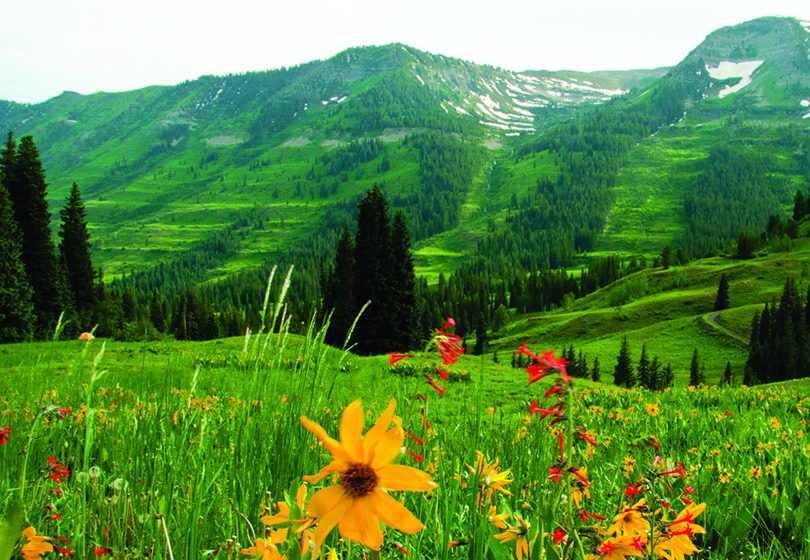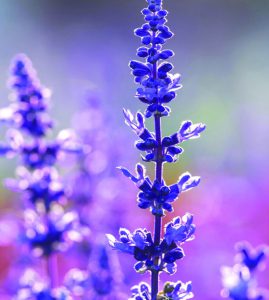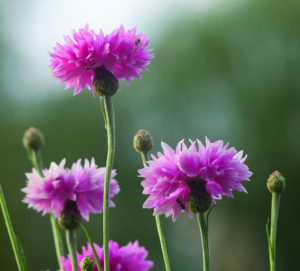By Vicki Spencer, Master Gardener
When I moved to Gunnison, fellow gardeners warned me of the difficulty of producing a decent crop of tomatoes above 7,000 feet, so I dipped my toes in gradually, rather than plunging in full force. The first year, I planted golden sweet tomatoes and grape tomatoes, with a shorter growing season. I also planted zucchini because it seems to grow anywhere. My crop was small, but gave me the track record I needed to expand my vegetable garden in subsequent years to include potatoes, garlic, onions, beans and peas. However, early season plants are at risk if you don’t monitor the weather vigilantly. One summer, my tomato plants were covered with fruit and I lost them all when I went to Denver for the weekend and failed to check the forecast.
Flowers are less challenging at high altitudes, especially if you focus on native plants. Salvia is one of my favorites. The flowers come in many varieties, and their aroma makes them resistant to deer. The deep blue of the award-winning Salvia sylvestris Blue Hill in my yard is not only brilliant to my eye, but also attracts pollinators, which are always welcome. The Blue Hill blooms all summer and thrives well in Colorado’s clay soil. Companion plants like Oriental poppies, daisies and dianthus really make the garden “pop.”
What I love about dianthuses is that they come in a variety of colors (red, white and pink) and bloom all summer. I plant them in clusters, arranged by color and scatter around the garden borders. There are differing opinions as to whether you need to deadhead (remove spent blooms) from dianthuses, but I do.
Some may find deadheading to be a tedious task, but I think it is a relaxing activity after spending the entire day in the office. To deadhead, you just pinch off the flower under its base. This leaves stems that stick up, so if I have more time, I will get my pruning shears and cut the stem just above the next leaf. You can try saving the blooms for the seeds for the following year, but I just let mine fall into the soil. If they self-seed, all the better.
I have a strong preference for native plants because they make sense in Colorado where water is scarce and we are constantly reminded to be water wise. I am also drawn to perennials because they will fill in empty spaces over time, reduce the need to weed and save lots of money. Nonetheless, each year I maintain a modest gardening budget that allows me to experiment with new plants and fill in winterkill with colorful annuals. Pansies and snapdragons are good choices because they can handle cold temperatures. Cosmos and alyssum also work well once the weather settles down in the summer. Flowering kale and cabbage make great filler and provide color well into the fall.
If you want to explore new high-altitude plants, I suggest going to the High Country Gardens website: highcountrygardens.com. The “Plant Finder” page suggests plants according to hardiness, ease-of-care and beauty.



